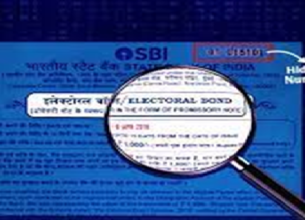GUIDELINES FOR “ON TAP LICENSING” OF SMALL FINANCE BANKS
07, Dec 2019

Prelims level : Economics- Banking
Mains level : GS-III Inclusive Growth and Issues arising from it.
Context:
- The RBI has recently released the Guidelines for “on tap Licensing” of Small Finance Banks in the Private Sector.
What is On-Tap Licensing?
- An “on-tap” facility would mean the RBI would accept applications and grant license for Small Finance Banks (SFBs) throughout the year. The policy allows aspirants to apply for small finance bank license at any time, subject to the fulfilment of the conditions laid down by the RBI.
What are Small Finance Banks?
- The Small Finance Banks (SFBs) are the differentiated banks which have been set up to further the objective of financial inclusion by primarily undertaking basic banking activities of acceptance of deposits and lending to un-served and underserved sections without any restriction in the area of operations.
Scope of Activities:
- Accept deposits and extend loans
- Undertake non-risk financial services activities such as distribution of mutual fund units, insurance products, pension products, etc. with the prior approval of the RBI
- Open at least 25 per cent of its banking outlets in unbanked Rural Centres.
- Sell Forex to Customers
- No restriction in the area of operations of small finance banks
How are Small finance banks different from the Payment banks?
- Both Payment Banks and Small Finance Banks are the differentiated banks which have been set up to promote financial inclusion. While Small Finance Banks can undertake both deposit and lending activity, the Payment banks cannot lend loans.
- Further, the Payment Banks cannot accept deposits more than Rs 1 lakh. The Payment Banks need to invest 75 per cent of their deposits in government securities with maturity up to one year, and the balance 25 per cent with the Commercial Banks.
RBI’s Guidelines on Small Finance Banks
1. Eligible Promoters:
- Resident individuals/professionals (Indian citizens) having at least 10 years of experience in banking and finance at a senior level;
- Companies and Societies having successful track record of running their businesses for at least a period of five years Existing
- Non-Banking Finance Companies (NBFCs), Micro Finance Institutions (MFIs), and Local Area Banks (LABs) in the private sector.
2. Fit and Proper‟ Criteria:
- RBI would assess the „fit and proper‟ status of the applicants on the basis of their past record of sound credentials and integrity; financial soundness and successful track record of professional experience or of running their businesses.
3. Capital Requirement:
- The minimum equity capital for small finance banks shall be Rs.200 crore.
- For the Primary (Urban) Co-operative Banks (UCBs), desirous of voluntarily transiting into Small Finance Banks (SFBs) the initial requirement of net worth shall be at Rs 100 crore, which will have to be increased to Rs 200 crore within five years from the date of commencement of business.
- SFBs will be given scheduled bank status immediately upon commencement of operations
4. Prudential Norms:
- The small finance bank will be subject to all prudential norms and regulations of RBI as applicable to existing commercial banks including requirement of maintenance of Cash Reserve Ratio (CRR) and Statutory Liquidity Ratio (SLR).
5. Priority sector Lending Requirements:
- The SFBs would be required to extend 75% of their loans for the priority sectors.
6. Dominance of Small value Loans:
- In order to ensure that the bank extends loans primarily to small borrowers, at least 50 per cent of its loan portfolio should constitute loans and advances of up to Rs.25 lakh.










